Hinduism is one of the oldest and most
diverse religions in the world. At heart of the Hindu spiritual
philosophy lies famous the trinity of Gods-Brahma the creator, Vishnu
the preserver and Shiva the destroyer, who is also known as Bhole Nath,
Shankar, Mahadev etc.
In this article, we describe the most
famous Shiva Temples in India. In addition to being important pilgrimage
destinations, these temples are a great source of spiritual comfort and
transcendental bliss. With the thought of Lord Shiva in mind, read
about popular shiva temples to find a source of inspiration for your
next visit.
Kedarnath Temple
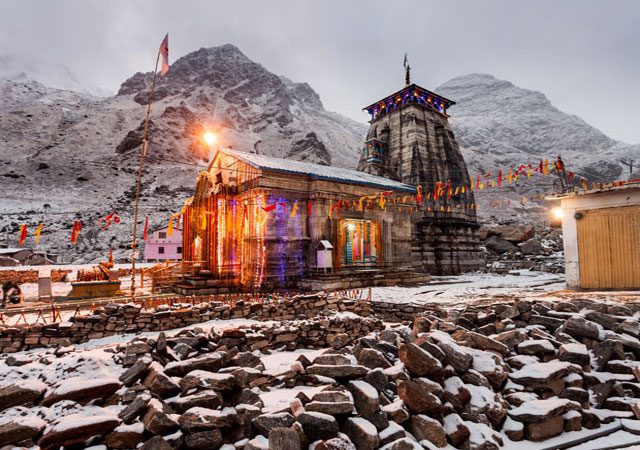
Perched high on the picturesque Garhwal Himalayan Range of Uttarakhand, near the Mandakini River, Kedarnath temple
is one of the most famous Shiva Temples in Indian Himalayas. Kedarnath
is one of four destinations of the Chota Char Dham, the revered
pilgrimage which has a great significance in Hinduism. The temple
remains open from April till mid-November and receive thousands of
devotees every year.
Somnath Temple
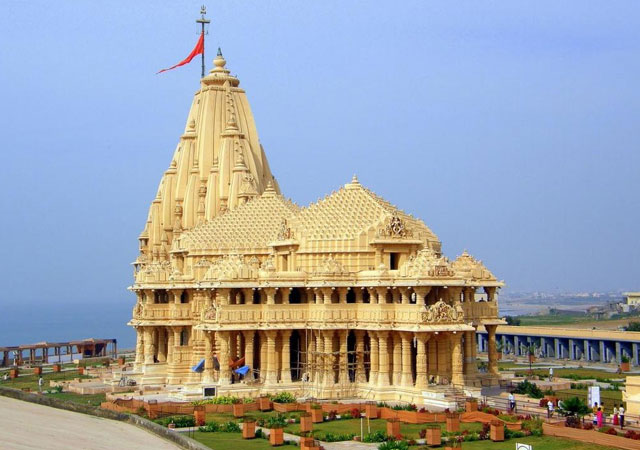
One of 12 Jyotirlingas, Somnath temple
yatra holds great prestige and reverence, it is one of the major
destination of Char Dham yatra. This historic temple is located in the
Prabhas Kshetra near Veraval in Saurashtra, near the sea shore. The
architecture of Somnath temple is in the beautiful Chalukyan Style. Thus
it is not only important religiously but it is also an impressively
beautiful temple.
Mallikarjuna Swamy Temple
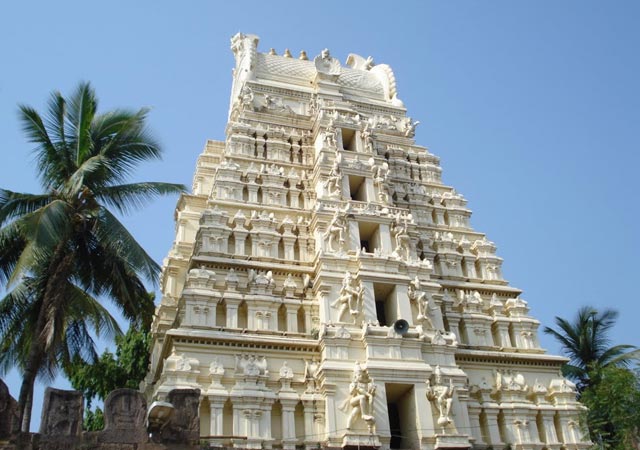
Built by King Harihara Raya of the
Vijayanagara Kingdom in the 14th century Mallikarjuna Swamy Temple is
located on the banks of the Krishna River. The temple with its gilded
spires, silver plated doors and exquisitely ornate pillars makes it one
of the most exquisite structures.
Mahakaleshwar Temple
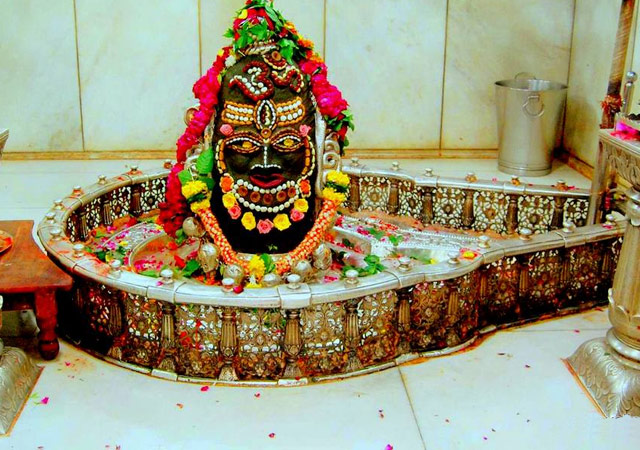
The Mahakaleshwar or Mahakaal Temple is
one of most famous Shiva temples in central India and one of twelve
Jyotirlingas in India. Located in Ujjain in Madhya Pradesh, the temple
has Lord Shiva established in the form of Mahakaal, which is a fierce
form of the deity and who is considered to be the destroyer of all
evils. One of best attractions of the temple is the early morning Bhasma
Arti which is considered to be very auspicious to attend. The lingam
established there is said to be svayambhu- that is it has originated by
itself. It is great spiritual merit to visit this temple.
Omkareshwar Temple
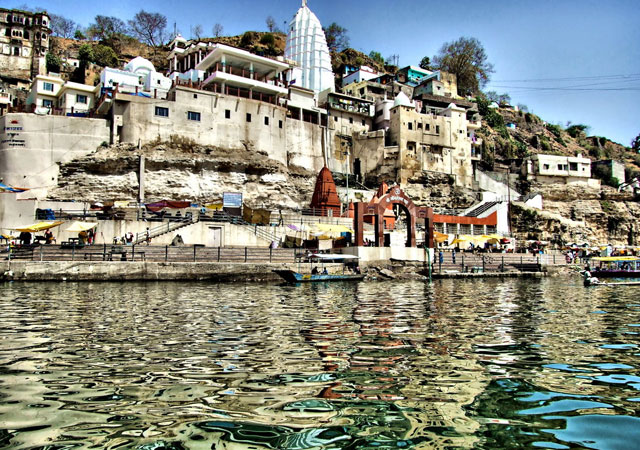
Situated on an island – Mandhata or
Shivapuri in the Narmada River in the Indian State of Madhya Pradesh,
the Omkareshwar Temple is another famous temple of lord Shiva in Madhya
Pradesh. The temple structure of Omkareshwar is a five storied complex
that has seats of different Hindu deities, in addition to the presiding
deity of Lord Omkareshwar.
Associated with different legends and
mythologies, the idol of Omkareshwar is three headed. Best time to visit
Omkareshwar temple is during the month of Shravan or on Mondays during
which it is decorated with different colors and has a special allure.
Bhimashankar, Maharashtra
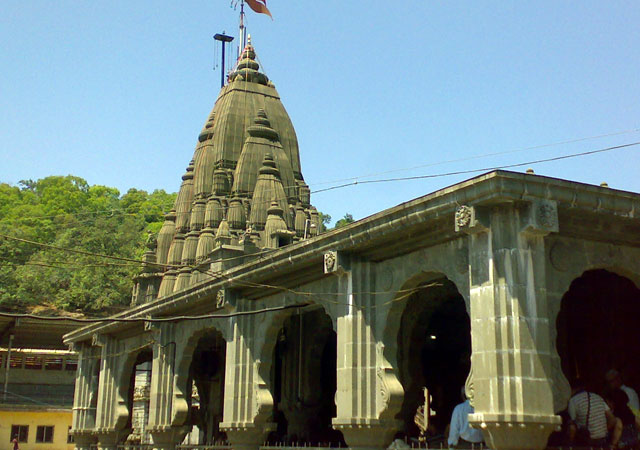
A revered Jyotirlinga temple in
Maharashtra, the Bhimashankar Temple is one of the most ancient and
graceful Hindu temple structures in west India built in the Nagara
architectural style. The temple is based on a legend. According to the
story a demon names Tripurasura observed strict penances in the forests
of Bhimashankar and managed to please Lord Shiva. The Lord in turn
blessed him with boon with a condition that it should be used only for
the betterment of Humans or he will have to lose his life.
But the demon started to disobey gods
and committing evil deeds. To stop him, Lord Shiva and Goddess Parvati
took the form of Ardhnareeshwar and killed Tripurasura. Due to their
descent on this site, Bhimashankar became a popular temple among lord
shiva devotees.
Kashi Vishwanath, Uttar Pradesh
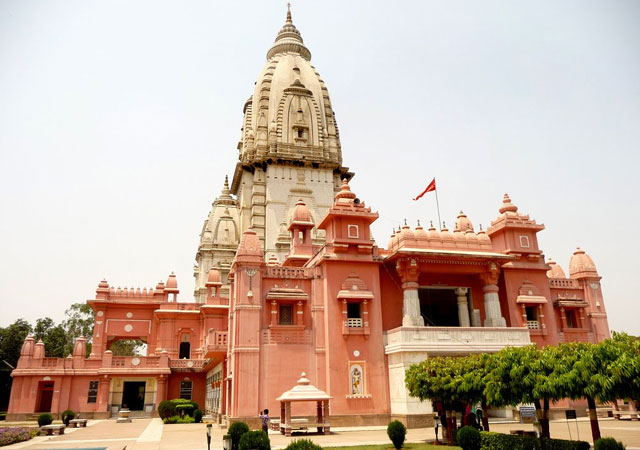
Shelter of all devoted souls, Kashi
Vishwanath temple in Varanasi is one of the 12 Jyotilingas of India and
holds a great importance in the tradition of Shaivism. The Kashi
Vishwanath temple, located in the historic city of Varanasi is a magnet
of thousands of devotees every year from India and abroad. The form of
Shiva, enshrined in the image of a lingam is a source of great peace and
spiritual uplifting for the visitors.
It is said that one who leaves his/her
body in Kashi Vishwanath gets liberated from the cycle of births and
deaths and even a single darshan of the sacred Jyotirlinga is equivalent
to the darshan of all other Jyotirlingas spread in different parts of
the country. Visited by many exalted saints and sages in the past, the
Kashi Vishwanath Temple is the embodiment of timeless spiritual values
and cultural traditions of India.
Trimbakeshwar, Maharashtra
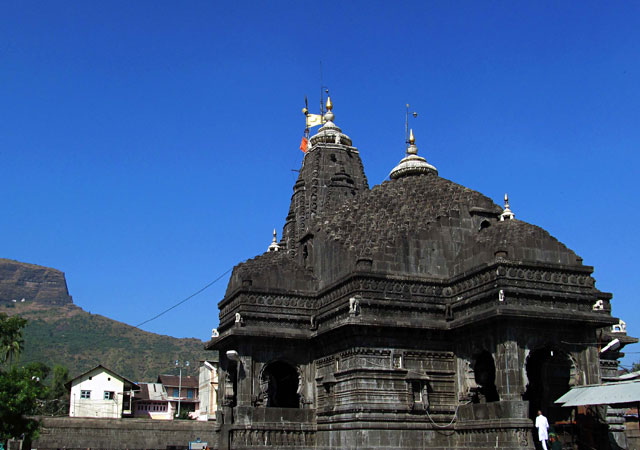
Another famous Shiva temples in
Maharashtra, Trimbakeshwar jyotirlinga is located at the source of the
Godavari River. The temple is said to be constructed by Peshwa Balaji
Rao in the classic Hemadpanthi style. Built completely of the black
stone, a visit to the temple is very important to complete the religious
course around the country.
The Shiva Lingam, established in the
temple has three faces that depicts Lord Brahma, Lord Vishnu and Lord
Shiva. Like the Mahakaal Lingam in Ujjain, the Lingam at Trimbakeshwar
is also a swayambhu, which means that it has been self-originated. The
sacredness of the place is also added by the fact that it has the origin
of River Ganges here, which is called Godavari in this region.
Vaidyanath, Jharkhand

The story of Vaidyanath temple is
associated with the legend that when Ravana, in order to please Lord
Shiva sacrificed his ten heads, Lord Shiva appeared here and treated
Ravana’s heads as a doctor (hence the name Vaidyanath). The Vaidyanath
Temple is one of the 12 Jyotirlingas and the complex houses 22 other
temples which are devoted to different deities.
The Lingam is said to be made of a
unique stone. The temple exhibits a special allure during the month of
Shravan, during which more than a million devotes visit the place. The
existence and significance of the temple is described in several Hindu
Texts and traditions and hence it is religiously important to visit this
place.
Nageshwar, Gujarat
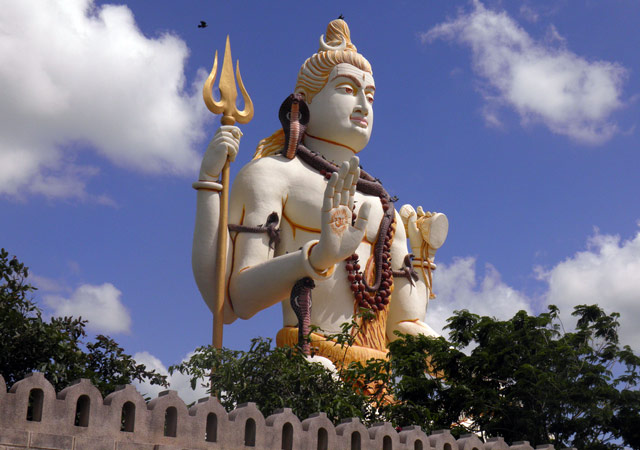
Located on the route between Gomti
Dwarka and Bhet Dwarka, The Nageshwara Temple is source of divine peace
and tranquility for thousands of devotees. Mentioned in the Shiva
Purana, the Nageshwar temple is one of the 12 Jyotirlingas and the
Lingam is a Swayambhu, i.e. self-originated or manifested.
The region in which the temple is
located was called “Darukvana”. According to the legends, it was to
protect His devotee Supriya along with others, who had been made
prisoners by a demon that this Jyotirlinga came into existence. Worship
to this Jyotirlinga is said to protect devotees from poison. The
wonderful temple that was built over this Jyotirlinga is said to be
constructed in 15th century.
Ramanathaswamy, Tamil Nadu
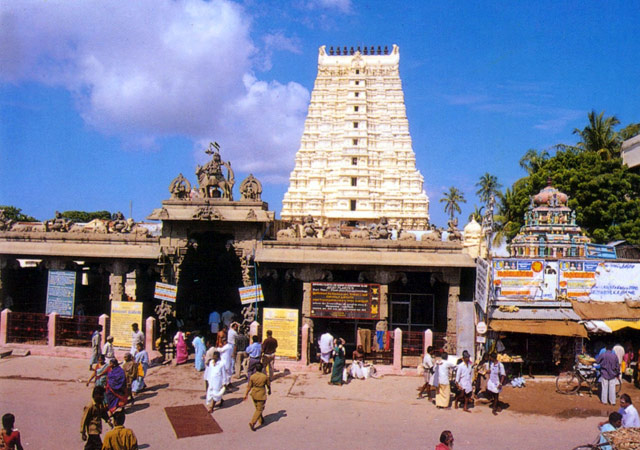
Located in Rameshwaram, the wonderful
and exotic temple of Ramanathswamy is a revered and highly esteemed
shrine of Lord Shiva in South India. The Temple is built over the same
place where Lord Rama established a Lingam to worship Lord Shiva to
absolve Him from the sin of killing Ravana, who was a Brahmin.
The temple has a lot of spiritual and
religious significance and is built in exquisite art and architecture,
having the longest temple corridor in the world.The temple in fact has
two lingams. The other lingam is said to have been brought by Lord
Hanumana from Varanasi. The temple is one of the four sites of the
sacred Char Dham Yatra.
Grishneshwar, Maharashtra
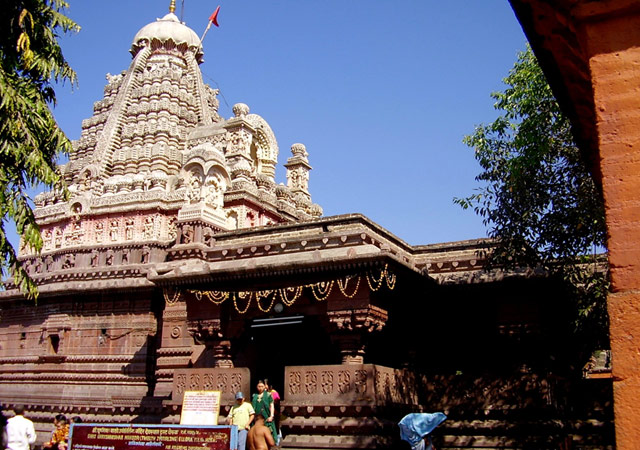
Situated in a village near Daulatabad,
the lingam of Grishneshwar is said to be the last jyotirlinga on Earth.
The temple of Grishneshwara is built of red rocks and is fashioned in
the pre-historic architectural style. Being located around 30 kilometers
from Aurangabad, the temple lies very close to the historic Ellora
Caves.
The temple was constructed by Ahilyabai
Holkar, who was the queen of the Malwa kingdom in the late 18th century.
The history of Grishneshwara temple is associated with a legend which
is based on how Grushma, a dedicated devotee of Lord Shiva got her son
back, who was killed by her jealous sister. After the Lord was pleased
by her devotion, the temple came to be known by the name Grishneshwara.
Amarnath Cave, Kashmir
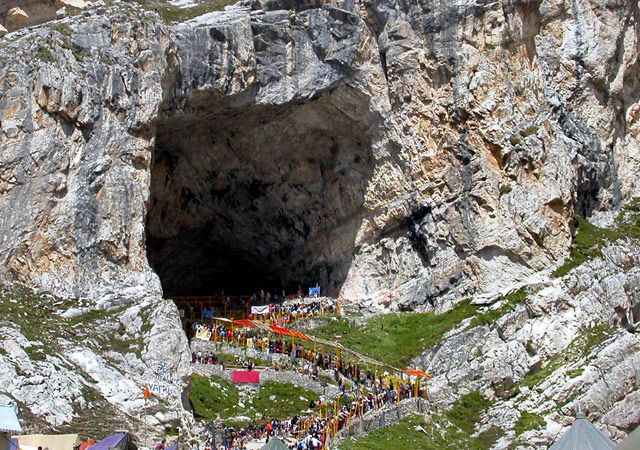
Amarnath Cave need no introduction as
one of the most famous pilgrimage site for lord shiva devotees. Located
at a height of 3,888 meters above sea level, the highlight of the cave
is the amazing and natural formation of the Shiv Lingam, which is formed
only once a year. The devotees require a lot of courage and physical
stamina as the route to the holy cave passes through high and rugged
terrains.
But being situated in Kashmir Valley,
the route of Amarnath Cave is also one of the most picturesque sights
with immense, snow clad mountains, beautiful streams and green meadows.
The Amarnath Cave is no doubt, one of most cherished and desired
pilgrimages associated with Lord Shiva.
Brihadeeswarar Temple, Tamil Nadu
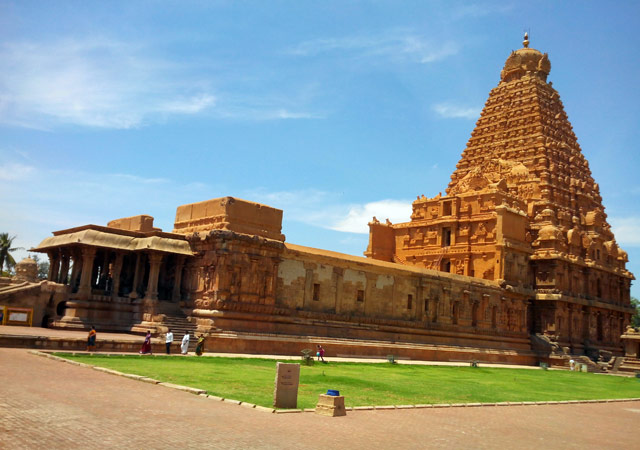
Adorning the beautiful city of Thanjavur
(Tanjore), The Brihadeeswarar Temple of Lord Shiva is one of the best
and classic examples of Dravidian Style of architecture. A UNESCO World
Heritage Site, the temple has an incredible Vimana, which is considered
to be the highest in the world. In addition to this, there is a big
statue of Nandi, which has been carved out of a single rock.
While outside the temple have statues of
popular deities, the presiding deity of the temple is Lord Mahadeva.
The site of the temple was constructed by Raja Raja Chola, one of the
best known and most popular of Cholan Kings. The imposing and
magnificent structures of the temple reflects one of the greatest
glories of Indian architecture.
Lingaraj Temple, Odisha
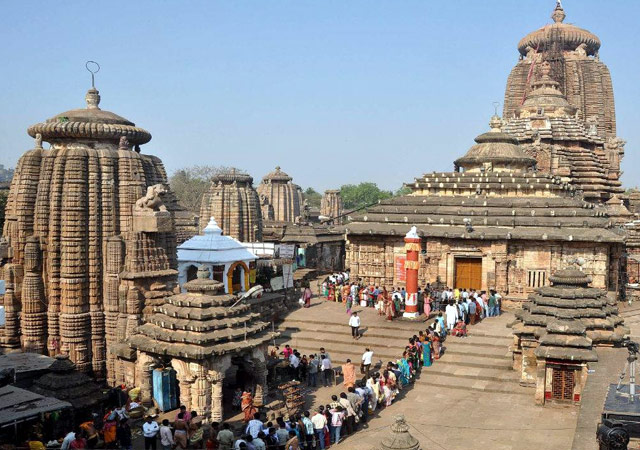
A colossal temple complex built of
sandstone and laterite, the Lingaraj Temple is an incredible house of
worship, dedicated to Lord Shiva. The presiding deity is the Lord
Harihara, one of the forms of Lord Shiva. It is believed to have been
constructed by the Kings of Somavamsi dynasty and then modified later by
the rulers of Ganga kingdom.
Lingaraj Temple is one of the oldest
such structures in the city of Bhubaneswar. A wonderful example of the
Kalinga Style of architecture, the Lingaraj Temple is one of the famous
temple in Odisha.
Kotilingeshwara Temple, Karnataka
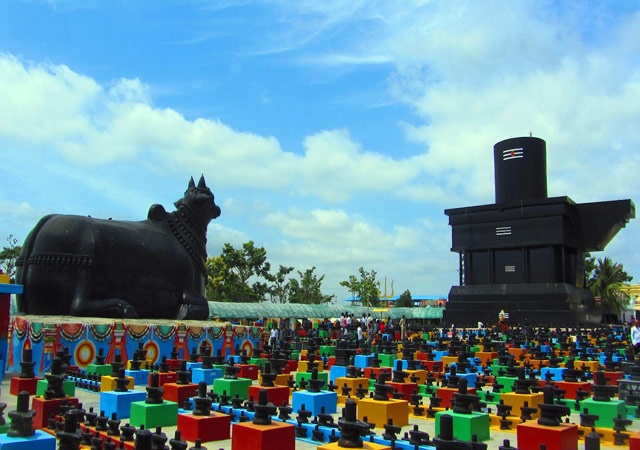
The temple literally has one crore (10
million) Shivlingams within its precincts and features one of the
biggest shivlingams in the world. Located in the Kammasandra village of
the Kolar district, the main shivlingam of the temple is around 33
meters tall while the Nandi, the celestial ride of Lord Shiva and which
is present in every Shiva temple, is around 11 meters tall. The main
deity of the temple is Lord Kotiligeshwara. The temple receives great
number of devotees on Shiva-Ratri, the occasion of divine marriage of
Lord Shiva and His consort.
Daksheswara Mahadev Temple, Haridwar

Loctated in the Kankhal district, about 4
kilometers from Haridwar, the Daksheshwara Mahadev temple is a
prominent place of devotion for the Shaiviite. The temple is name after
Daksha Prajapati, who was the father of Sati, the consort of Lord Shiva.
The temple was built by Queen Dhankaur in 1810 and was rebuilt in 1962.
The temple is situated at the same site
where Daksha performed the celestial sacrifice, which led to the burning
of Sati and Lord Shiva getting angry. Also within the complex is a
temple dedicated to Ganges and a Ghat where Ganges flow and where
devotees can take bath.
Annamalaiyar Temple, Tamil Nadu
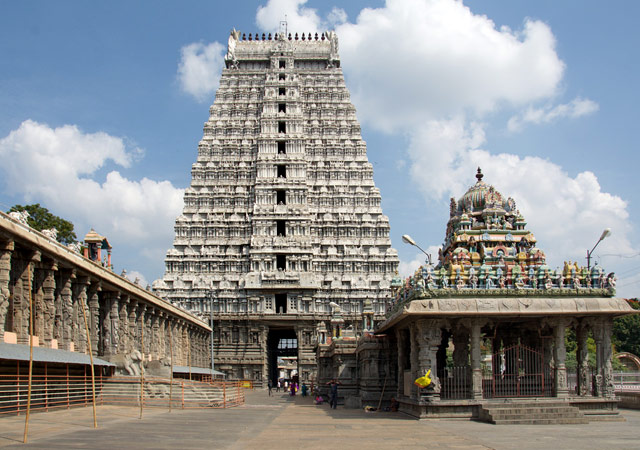
Situated at the base of the Annamalai
hills, Annamalaiyar is one of the very famous places of worship of the
devotees of Lord Shiva. The temple known for its giant size and lofty
vimana. It was built primarily during the reigns of the Chola rules and
was renovated by the kings of the Saluva and Tuluva dynasty. The temple
has a unique charm during the Karthigai Deepam Festival.
Tarakeshwar Temple, West Bengal
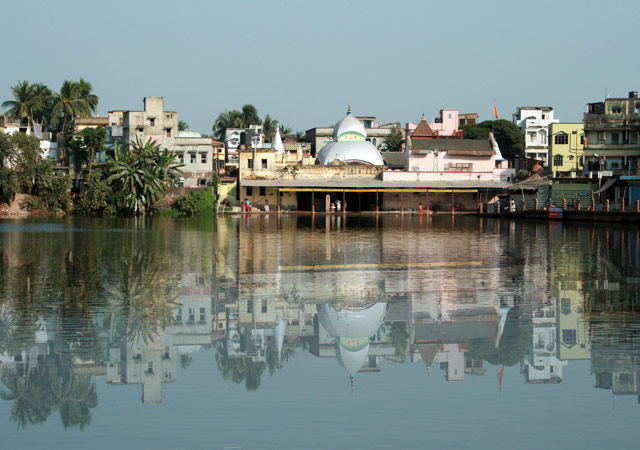
Located in the Hooghly district of West
Bengal, the Tarakeshwar Temple is an important home of Lord Shiva in the
Eastern India. As with most of the temples in India, different stories
are attached to the Tarakeshwar temple as well.
According to one version, the temple was
built by Raja Vishnu Das, who was instructed in his dream by Lord Shiva
to build this temple. Also the lingam that is worshipped here was found
in the jungle by the mendicant brother of Raja Vishnu Das. The temple
has a lot of significance for the people of local community. It is said
that devotees who fast in this temple, without even consuming water, get
their wishes fulfilled by Lord Shiva.
Murudeshwara Temple, Karnataka
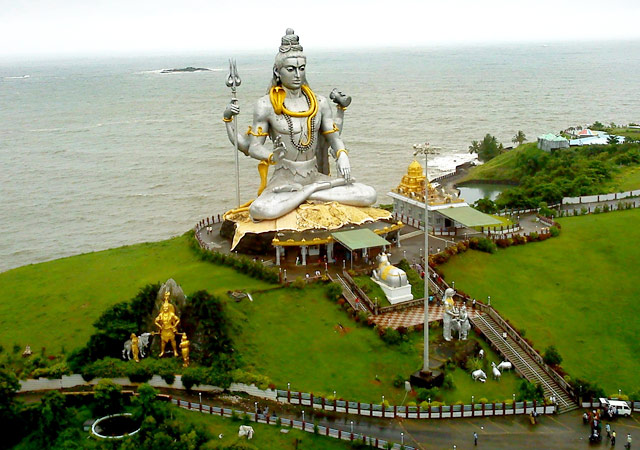
A twenty storied temple structure
located on the hilltop and surrounded by the waters of the Arabian Sea,
the Murudeshwara Temple illuminates the Bahtkal Taluk of Uttara Kannada
district of Karnataka with an amazing spiritual aura.
The temple has the second largest statue
of Lord Shiva in the world and affords a great sight in the evening
during the sunset. The idol of Lord Shiva is around 37 meters tall and
is said to have taken two years to build. It is doubtlessly a great
attraction.
Vadakkunnathan Temple, Kerala
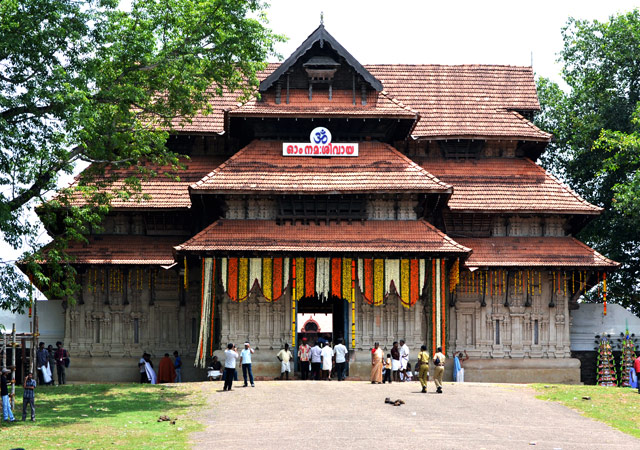
Vaddakunathan is one of the most popular
Shiva temples in Kerala, being located in the Thrissur City. It is
believed to be the first temple built by Lord Parshurama. The Lord is
worshipped here using a huge amount of Ghee (clarified butter) which is
then distributed amongst the devotees to be carried back home as prasad.
The presiding deity, Lord Shiva, is
worshipped here as Lord Vadakkunathan. The temple is surrounded by
massive stone walls that have gopurams in all the four directions. The
lingam within the temple is hardly visible, being covered in massive
amounts of Ghee. The temple attract a significant number of devotees
every year. Non-Hindus are not allowed inside the temple.
Bhavnath Mahadev Temple

One of the foremost holy places in
Junagadh, the Bhavnath Temple is located on the foothills of the
beautiful Girnar Hills. The temple is said to be a revered pilgrimage
spot for Hindus as well as Jains. The main attraction, the Bhavnath Fair
is held in the month of January-February is one of most colorful
festivals that is celebrated since ancient times.
The fair, attended by a large number of
Naga Sadhus, is celebrated for five days and is accompanied by folk
singers and dancers and devotees. It is believed that Lord Shiva Himself
is present during the fair to bless the devotees. It is not only a
great sight but also a wonderful spiritual experience.
Srikalahasti Temple, Andhra Pradesh
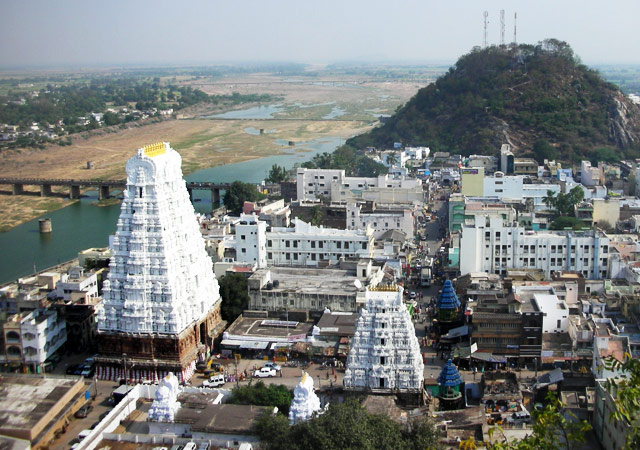
Ornamenting the beautiful Chittor
district of Andhra Pradesh, Srikalahasti Temple is an elegant 12th
century temple built by the rulers of Chola and Vijayanagara Kingdoms.
Lord Shiva is worshipped here as Kalahasteeswara. The Lingam, which is
white in color is a swayambhu or self-originated or self-manifested.
Located 36 kilometers away from
Tirupati, the lingam at the temple is also one of the Panchbhoota
sthalams. It is associated with the legend of Kanappa who was ready to
offer both his eyes to Lord Shiva before the Lord stopped him, granting
him moksha (eternal bliss). The temple is famously referred to as the
Kailash of South India.
Kandariya Mahadeva Temple, Madhya Pradesh

An epitome of exquisite architecture and
detailed carvings on the walls, the Kardariya Mahadev Temple stands
apart as one of the most exotic Shiva Temples in India. The temple is
embellished with over 900 beautiful structures both inside and outside.
Besides other wonderful carvings include the sculptures of dancing
Chamunda and that of Birbhadra.
Thus, Kandariya Mahadev Temple is
significant not only from spiritual point of view, but architecturally
it is also a delight for students and historical buffs. The temple is
located within the complex of the famous Khajuraho Temples, which are
one of the main icons of India and most famous historical and travelling
site.
Tungnath Temple, Uttarakhand
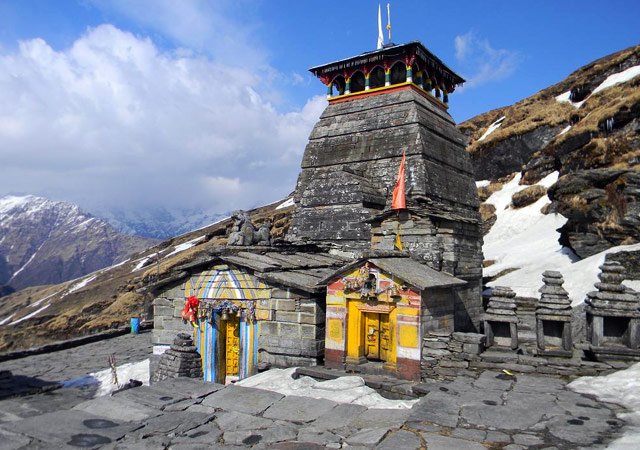
The highest Shiva temple in the world,
visiting Tunganath temple is not only spiritually refreshing, but also
exciting from the point of view of adventure. Perched at a height of
3,680 meters above sea level in the Rudraprayag district of Uttarakhand,
the temple is located at the base of the Chandrashila Peak. It is also
one of the most revered Shiva temples, being one of the Panch Kedar
Temples.
Tunganath Temple is said to be over
1,000 years old. It was discovered by Adi Shankaracharya and few other
idols of Goddess Parvati and other gods could be seen. During the winter
season, the idol of Lord Shiva is transferred 19 kilometers down to
Muktanath.
Chidamabaram Nataraja Temple, Tamil Nadu
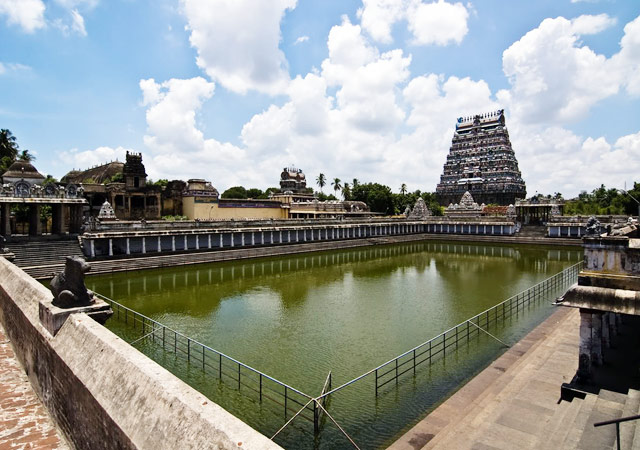
Also known as Thillai Nataraja Temple,
the Chidambaram Natrajar Temple is a historic Shiva Temple in South
India which is considered as one of the Panch Bhuta Sthlams. This old
temple has been renovated over the period of time by different dynasties
like Pandyas, Cholas, Cheras, Pallavas and Vijayanagara who ruled over
this region, thus leaving the mark of their unique architectural style. The
layout of the temple is unique and is full of different philosophical
meanings. The temple has in total of nine gateways out of which four of
them having gopurams or gateway towers. It is really a beautiful temple
with a splendid architecture.
Jambukeswarar Temple, Tamil Nadu
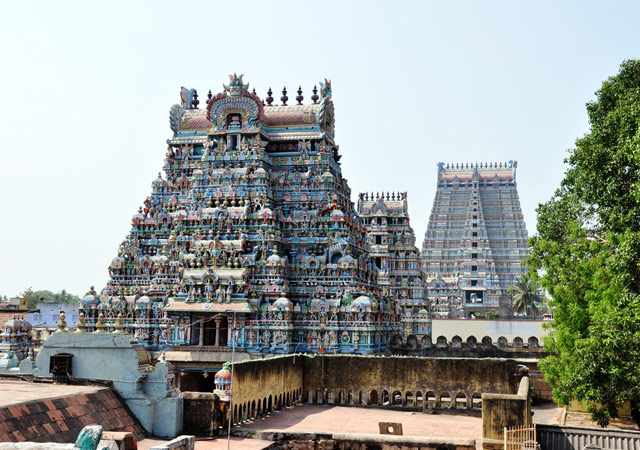
Located in the Srirangam Island of the
Tamil Nadu region, Jambukeshwara is an important Shiva Shrine and one of
Panch Bhut Sthalam. Worshipped here with His consort Akilandeshwari,
which is other name of Goddess Parvati, Lord Shiva is present in the
form of Shiva Lingam which sprouts non-stop trickles of water.
A perfect example of the Dravidian Style
of Architecture, the temple was built around 2nd century AD and contain
many inscriptions from the Chola Period. The temple was constructed by
Kocengannan, one of the earliest dynasties of the Cholas, around 1,800
years ago. The temple is also one of the co-hosts of the annual
Natyanjali, which is a festival of classical Indian dance.
Koteshwar Temple, Rudraprayag
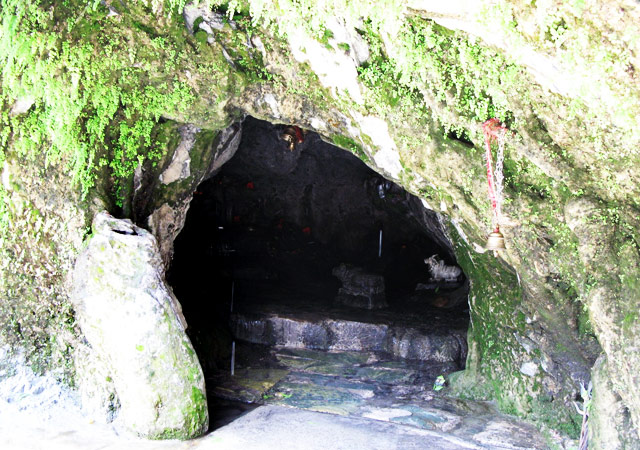
Located on the holy bank of the
Alaknanda River near the Rudraprayag Town, the Koteshwar Mahadev Temple
is an important Shiva Shrine in the Northern state of Uttarakhand.
According to the legends, Lord Shiva meditated here while on his way to
Kedarnath, when asking for Lord Vishnu’s help in killing demon
Bhasmasur.
Several different idols of deities,
which are located in the cave are said to be originated naturally. The
temple is filled with a unique aura which can only be experienced by the
devotees. The best time to visit this place is during the holy month of
Shravan, which is associated with Lord Shiva.
Bhojeshwar Shiva Temple, Madhya Pradesh
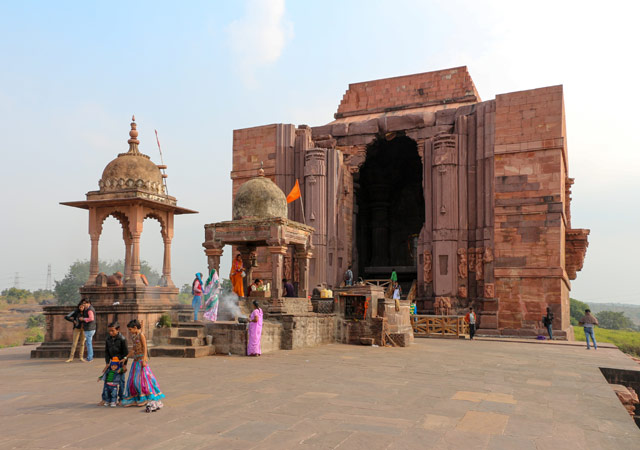
Situated on the bank of the Betwa River,
The Bhojeshwar Temple is primarily known for the colossal Shiva Lingam,
representing Lord Shiva. The Lingam is nearly 5.5 meters tall and is
said to be carved out of a single rock. It is one of the largest Shiva
Lingam in the country which draws a sense of wonder from all those who
visit it.
The temple mysteriously has an
incomplete structure, the reason behind which is unknown. However, due
to its importance and religious significance it is widely called as the
Somnath of the East.
Kailashnath Temple, Maharashtra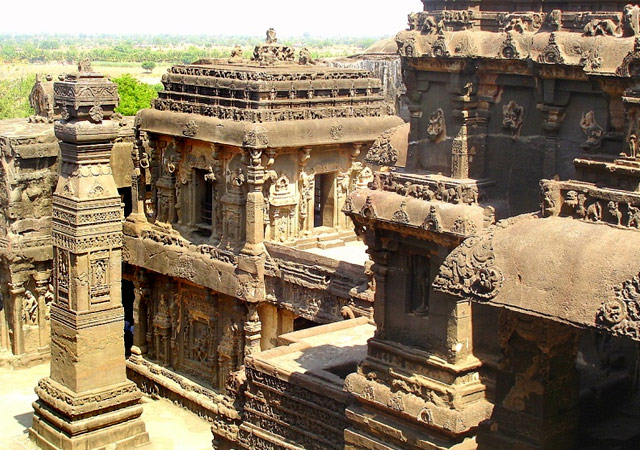
One of most admired and famous Shiva
temples in the country, the Kailashanath Temple at Ellora is a stunning
epitome of beauty and splendor. This amazing megalith structure is a
part of the 34 temples that comprises the complex of Ellora caves. It
bears the mark of the Rashtrakuta style of architecture from which many
other temples of South India later drew inspiration.
The temple is a symbol of Mount Kailash,
which is the abode of Lord Shiva. The Kailashnath Temple is beautifully
sculpted in every direction with the scenes and tales from Hindu
Mythology, exhibiting the astonishing skill of workmanship. The temple,
carved completely out of a single face of rock is located at Cave no. 16
of Ellora.
Related Posts:-
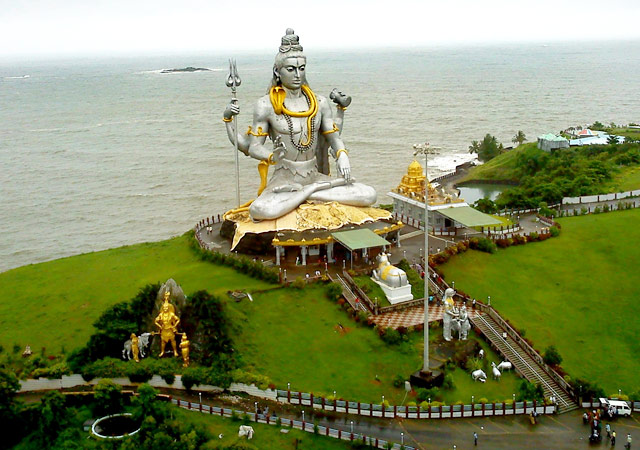 [
[
i am lord shiva bhagat and always try to visiting all temples of mahadev i have visited some and remaining in my bucket list. a big thanks to you for sharing this post.♥
ReplyDeletePhata Village